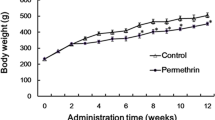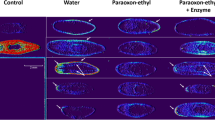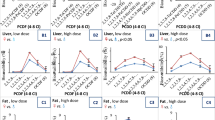Abstract
THE insecticide ‘Isolan’ (1-isopropyl-3-methyl-5-pyrazolyl dimethylcarbamate) is more toxic to rats by the dermal than by the oral route1. This finding is interesting, because the opposite is true of most compounds. It was not known whether the unexpected difference in the toxicity of ‘Isolan’ by the two routes was caused by detoxification in the intestinal lumen, poor absorption from the gastrointestinal tract, detoxification in the liver, unusually efficient percutaneous absorption, or some other mechanism.
This is a preview of subscription content, access via your institution
Access options
Subscribe to this journal
Receive 51 print issues and online access
$199.00 per year
only $3.90 per issue
Buy this article
- Purchase on Springer Link
- Instant access to full article PDF
Prices may be subject to local taxes which are calculated during checkout
Similar content being viewed by others
References
Gaines, T. B., Toxicol. App. Pharmacol., 2, 88 (1960).
Ross, P. L. E., and Rappaport, A. M., Nature, 188, 326 (1960).
Bollman, J. L., J. Lab. Clin. Med., 33, 1348 (1948).
Tullner, W. W., and Hertz, R., Endocrinology, 66, 494 (1960).
Author information
Authors and Affiliations
Rights and permissions
About this article
Cite this article
GAINES, T., HAYES, W. & LINDER, R. Liver Metabolism of Anticholinesterase Compounds in Live Rats : Relation to Toxicity. Nature 209, 88–89 (1966). https://doi.org/10.1038/209088a0
Issue Date:
DOI: https://doi.org/10.1038/209088a0
This article is cited by
-
Metrifonate
Archives of Toxicology (1978)
-
Metabolic fate of dichlorvos in swine
Archiv f�r Toxikologie (1972)
Comments
By submitting a comment you agree to abide by our Terms and Community Guidelines. If you find something abusive or that does not comply with our terms or guidelines please flag it as inappropriate.



